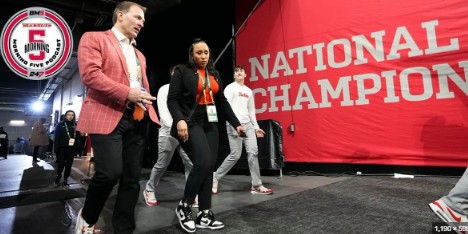In recent years, college athletics has undergone a remarkable transformation, one that reaches far beyond the playing field, touching every corner of the educational experience—from star athletes on football and basketball teams to competitors in less-publicized, non-revenue sports. Central to this evolution are two interwoven developments: the centralization of Name, Image, and Likeness (NIL) governance and the widespread embrace of analytics in decision-making. Together, these forces are signaling a shift toward greater transparency, more equitable distribution of resources, and comprehensive support for student-athletes, regardless of sport. What was once an ad hoc, fragmented system built around high-profile athletes is evolving into a more organized, data-informed model that has the potential to benefit all participants in collegiate athletics. This sweeping change promises not just incremental improvements but a fundamentally different landscape, one in which fairness, support, and opportunity become core values.
Historically, each school navigated NIL in its own way. Regulations varied from campus to campus, and implementation was uneven. Some prominent athletes enjoyed lucrative endorsement deals, while lesser-known participants existed in limbo, unaware, unprepared, and often unable to take advantage of their own marketability. The absence of a standardized framework meant opportunities were based less on genuine merit and more on visibility, luck, or insider connections. Many athletes lacked education or guidance, which led to missed opportunities or compliance missteps. At the same time, behind the scenes, staff untrained in NIL negotiations struggled to navigate a rapidly changing environment. In short, it was a wild frontier.
That wildness, however, masked a more fundamental inequality. Non-revenue sports—such as swimming, tennis, track and field, gymnastics, volleyball, wrestling, rowing, and others—lack the visibility of football games or men’s basketball tournaments. As a result, athletes in these programs rarely received the same mainstream media exposure; often they didn’t even fully understand what NIL was or how it could benefit them. In many cases, these student-athletes placed markers on certificates of participation or trophies to mark accomplishments, but among them was untapped potential. Left unaddressed, this asymmetry threatened to leave a large swath of college athletes behind at a time when collegiate sports is being redefined.
And so universities began centralizing NIL resources—establishing dedicated offices, hiring staff with legal or marketing backgrounds, and creating educational programs to help all athletes, not just the stars, understand their rights and opportunities. Clear compliance protocols were put in place, NIL policies aligned with NCAA and state regulations, and reporting systems streamlined. Athletes received access to education on personal branding, contract negotiation, financial planning, managing social media, and tax obligations. Rather than relying on individuals to piece together knowledge from scattered sources, athletes could now rely on structured training, support, and professional oversight.
Alongside this shift, schools began to partner with platforms and collectives that offered educational workshops, ethical guidance, and financial literacy. Athletes were encouraged to think of themselves as entrepreneurs, but ones supported by professionals rather than left isolated. This collective effort significantly reduced the risk of compliance violations; it also spread benefits beyond just the most visible names on campus.
The story doesn’t stop with NIL, however. Around the same time, a quiet revolution in analytics was gathering steam. College programs—elite and modest alike—began embracing data-driven approaches to improve athlete performance, team strategy, recruitment, and even academic support. In sports like football and basketball, analytics long gained mainstream interest, but now even traditionally low-tech sports—such as cross-country, swimming, track, and gymnastics—are seeing the benefits of performance metrics and modeling. Services measuring heart rates, recovery rates, biomechanical patterns, and nutrition data became common; video analysis tools allowed coaches and athletes to break down form, technique, and efficiency as never before.
By combining centralized NIL structures with analytics, schools began to unlock synergies they had not anticipated. Analytics could help identify student-athletes who may have local influence—regional chart-toppers in high school, social media micro-influencers, or students engaged in niche athletic subcultures. That data, when paired with brand potential, specialized NIL opportunities emerged across all programs. Suddenly, a standout volleyball player or a defensive specialist in lacrosse could become part of flattering campaigns—promoting local businesses, sports training equipment, health and wellness brands, or digital education tools. With appropriate training, these athletes were able to leverage their network and reach, turning personal passion into revenue while enriching the local and campus community.
Likewise, in sport-specific ways, analytics-generated insights can back NIL marketing claims. A swimmer with analytics data showing consistent improvement and competitive wins can tie that evidence into advertorials about recovery shakes, athletic wear optimized for performance swimming, or monitoring tools for athlete health. In the eyes of industry partners, this quantifiable data creates authenticity—they can confidently know the athlete’s time in the pool or strength progression is real, not just a marketing hook. In short, analytics not only helps the athlete improve personally but also increases their value in the marketplace.
Meanwhile, at the institutional level, administrators gradually adopted analysis of engagement, equity, and outcomes. Central offices monitored how well each sport’s athletes were utilizing NIL opportunities. Metrics emerged around participation rates, sponsorship deals per sport, revenue earned by gender, compliance errors, and engagement in workshops. With this data, decision-makers could identify disparities—for example, that swim and diving athletes were receiving 60 percent fewer NIL deals despite consistent individual results. Knowing this, schools took action—targeting previously underserved programs with tailored education sessions and connecting athletes with micro-influencer matchups. They tracked improvements in equity metrics over time, further determined when NIL revenue was impacting retention rates, or when breaches were linked to knowledge gaps.
This institutional data collection also introduced an accountability mechanism that was revolutionary. Schools could no longer claim ignorance of disparities; now dashboards showed hard evidence of where disparities existed. Athletic directors set four metrics—participation in NIL training, number of NIL contracts executed, total NIL dollars earned, and compliance incidents—for each program. Teams that exceeded benchmarks received priority in resource allocation; those that lagged were mandated to host additional campus workshops. Athletic scholarship renewals began to reflect not only statistics on the field but also demonstrated life-skill development. The result? Measurable progress and more fairness in providing support to all sports.
Perhaps most importantly, the combination of NIL centralization and analytics also created educational equity. Student-athletes from different socioeconomic backgrounds often lack access to the same private marketing and branding expertise as high-visibility peers. By creating centralized and data-informed programs, schools democratized access to essential knowledge. Whether a standout golfer or star wrestler, athletes gained access to professional talent agents, marketing tools, SEO lessons, and social-media workshops. They also learned financial management: how to budget, invest, and plan taxes; clinical psychologists lectured on balancing fame and performance; sports lawyers explained contractual protections; coaches delivered media training; and campus writing centers guided them in crafting formal proposals for NIL engagements.
The impact rippled outward. Athletes, now better equipped to build brands, made more informed decisions. The likelihood of exploitative contracts and hidden clauses decreased. Parents became more engaged and reassured that their kids were supported. Other universities took note and began sharing best practices—or even collaborating on scheduling cross-campus training webinars. Conference-level NIL coalitions formed, funded by shared analysis, offering regional standards and while respecting institutional autonomy.
Beyond NIL, analytics reshaped academic and performance development as well. Monitoring tools captured training load, rest, nutrition, psychological readiness, and patterns in performance dips or injury risk. Coaches adjusted training to reduce overuse injuries, while academic support teams used data to identify student-athletes trending toward burnout, triggering interventions. As a result, completion rates improved, mental health crises declined, and performance consistency increased. Athletes felt more secure and supported—their off-field well-being now valued as a part of their athletic success.
Taken together, these developments represent more than the sum of their parts; they define a new era in collegiate athletics. One in which brand building is treated seriously but distributed across the board. One in which data informs decisions at every level—from recruitment to performance to academic retention to career development. One in which each athlete is recognized both as a player and a person, with attention to personal agency, career readiness, and equitable treatment. What emerges is a culture shift: from “the star gets everything” to “everyone gets fair access and support.”
Of course, challenges remain. Data privacy is a concern: biometric tracking must balance athlete well-being with respect for privacy rights. Sponsorship saturation is also a risk; as more deals are made, institutions must enforce policies preventing exploitative or distracting conflicts of interest. Smaller schools may struggle with resource allocation, requiring external partnerships or shared service arrangements. And model refinement is ongoing—analytics can help, but human judgment remains essential in understanding nuance. Compliance mechanisms must keep pace with rapidly evolving NIL rules at state and federal levels.
Nevertheless, the direction is crystal clear. Centralization and analytics, working together, are powerful forces propelling college athletics toward a future where transparency, support, and equity become the expected norm—even in non-revenue sports that had once been sidelined. Instead of a system driven by fame and visibility, what’s taking shape is a human-centered model grounded in data-informed decisions, structured guidance, and holistic support.
At its heart, this new era empowers student-athletes to thrive beyond the stadium. They’re learning entrepreneurship, financial literacy, professional communication, and media skills through NIL education. They’re avoiding injuries and burnout through analytics. They’re accessing personalized academic support and career-future counseling. They’re building brands and reputations tied to their performance and values, not just game-day highlights.
Administrators and coaches, too, are transformed—expected to use data dashboards, monitor equity indicators, and question historical biases that prioritized football or men’s basketball. Departments now justify support for non-revenue programs by showing NIL participation rates, academic progress, injury prevention success, and athlete satisfaction scores. Senior staff who once viewed non-revenue sports as peripheral now recognize their mission-critical role in the institution’s values and community image.
When future historians look back on this period, they’ll see it as a pivot point. College sports shifted from fragmented, fame-centric governance to a more systematic, athlete-centered paradigm. The changes around NIL centralization and analytics use—even in small sports—will be remembered not for disrupting college athletics, but for democratizing it. For making justice a verb, not a slogan. For ensuring that every student-athlete, regardless of whether they play before 100,000 passionate fans or in an intimate campus gym, has dignity, opportunity, and support.
So as transparency becomes the default, not the exception, and fairness the guiding principle, the college sports ecosystem will evolve yet again. It will reflect not just athletic excellence but also educational equity, personal growth, and thoughtful stewardship of student potential. The road forward is not without bumps—policies will need updating, privacy concerns addressed, and best practices continually refined—but the destination represents a vision long overdue. From centralized NIL offices staffed with trained advisors to data-informed dashboards monitoring equitable distribution, from performance analytics that protect athletes to entrepreneurship education that empowers them, this new era is co-authored by student-athletes—men’s, women’s, football, fencing, or track—who deserve nothing less.



